Topic Service
What is a Grid-Scale Battery Storage System?
Renewable energy sources such as solar and wind power are subject to fluctuations in output depending on weather conditions and seasonal factors.
Grid-scale battery storage systems store surplus electricity from the grid and discharge it when needed, allowing for the supply of power back into the grid.
By utilizing these systems, it is possible to participate in electricity markets and generate revenue through strategic energy trading.
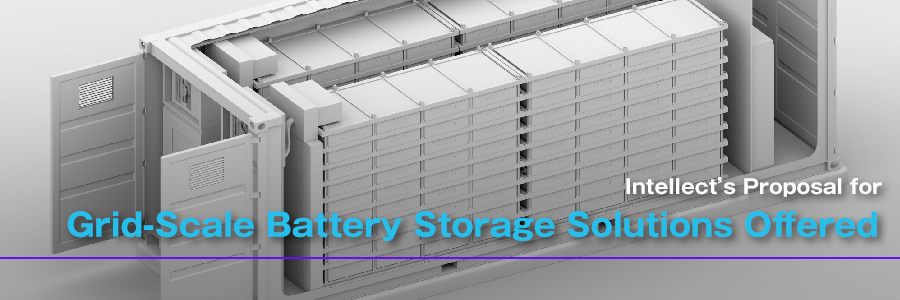
Supporting the Introduction of Grid-Scale Battery Storage Systems
Contributing to New Revenue Opportunities and a Sustainable Society
●About Grid-Scale Battery Storage
In recent years, growing concern over global warming and environmental issues has accelerated the adoption of renewable energy. Solar and wind power are expected to serve as sustainable and clean energy sources; however, their output is significantly affected by weather conditions and time of day, making supply stability a major challenge.
Grid-scale battery storage systems play a critical role in addressing this issue. By storing surplus electricity generated from renewable sources and discharging it during periods of low generation, these systems help ensure a stable energy supply and enable more efficient use of clean energy. As a result, they support the expansion of renewable energy and the realization of a more sustainable society.
At Intellect, we leverage our expertise and experience in the planning, development, design, construction, and O&M of solar power systems, battery storage systems, and geothermal binary power plants. We support the implementation of grid-scale battery storage from the perspective of the business operator, helping clients turn energy management into a strategic asset.
●What is a Grid-Scale Battery Storage System?
A grid-scale battery storage system is a standalone battery installation that connects directly to the power grid. It stores electricity from the grid (“charging”) and discharges stored electricity back into the grid (“discharging”) to enable power sales and support grid stability.
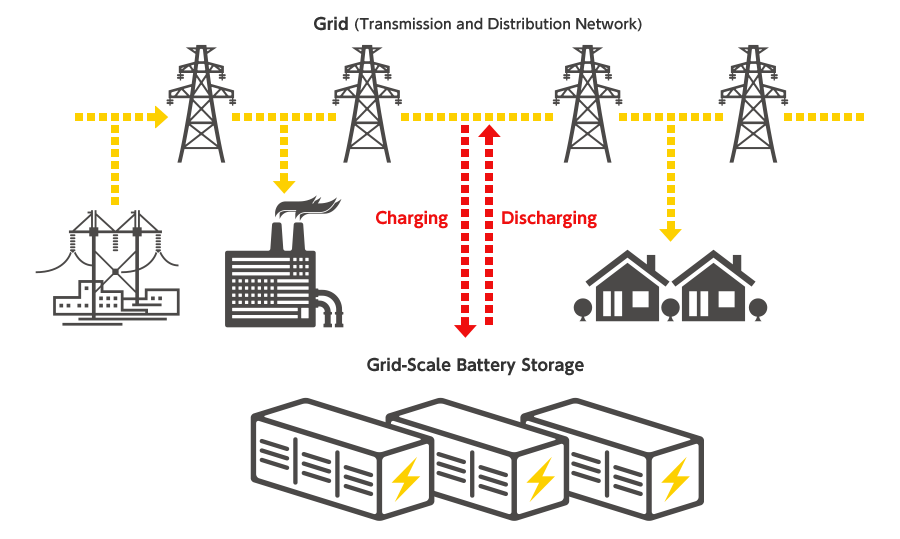
●Conceptual Image of a Grid-Scale Battery Storage Facility

※This is an image of a 2MW / 8MWh (4-hour duration) battery storage facility.
●Monetizing Grid-Scale Battery Storage
Electricity discharged from a battery storage facility is primarily traded in the following three “markets.” Revenue is generated by selling electricity or providing services within each of these markets.
*Please note: trading outcomes and profits are not guaranteed.
●Key Factors Driving Interest in Monetization
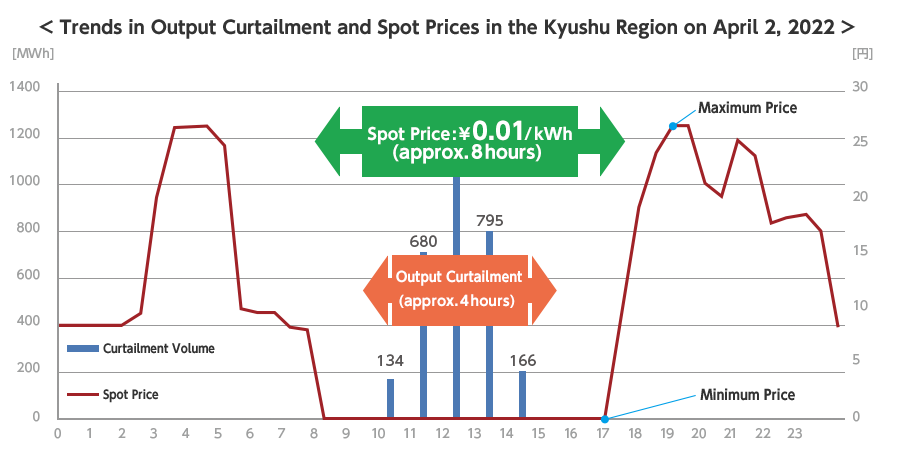
(Source: Partially edited from the Agency for Natural Resources and Energy, "Considerations on the Connection and Use of Grid-Scale Battery Storage," May 29, 2023)
①ncreasing Price Fluctuations in the Wholesale Electricity Market
Minimum Prices: More hours of low pricing due to increased output curtailment.
Maximum Prices: Higher electricity prices are making peak prices more common.
②Full Launch of All Products in the Balancing Market
This market enables general transmission and distribution operators to procure balancing capacity necessary for frequency regulation and supply-demand adjustment within their service areas.
Battery storage systems, with their fast response times, are expected to play an active role in this market.
③Declining Battery Storage Costs
The global scale-up in battery adoption is driving cost reductions.
Multiple government subsidies have also been budgeted to support deployment.
④Policy-Driven Expansion of Renewable Energy Toward Carbon Neutrality by 2050 Japan aims to reduce greenhouse gas emissions by 73% by fiscal year 2040 (compared to 2013 levels) and expand solar power generation as a mainstay energy source.
Ongoing growth in renewable energy deployment, particularly solar, is expected.
●Business scheme for Grid-Scale Battery Storage
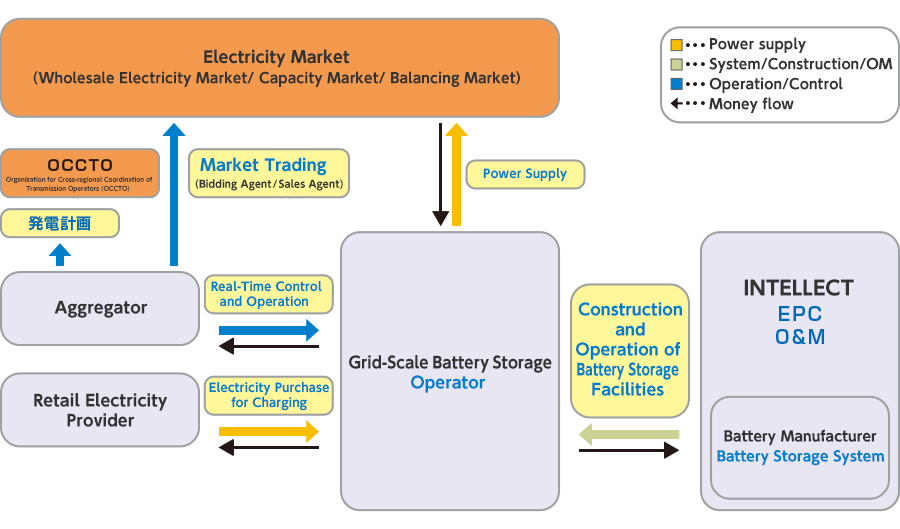
*We can provide support to retail electricity suppliers and aggregators with experience in grid storage batteries.
*Aggregator: A service provider that supports battery operators by helping design operational strategies, managing control functions, and acting on behalf of the operator to maximize the benefits of the battery storage facility.
●系統用蓄電池の導入フロー
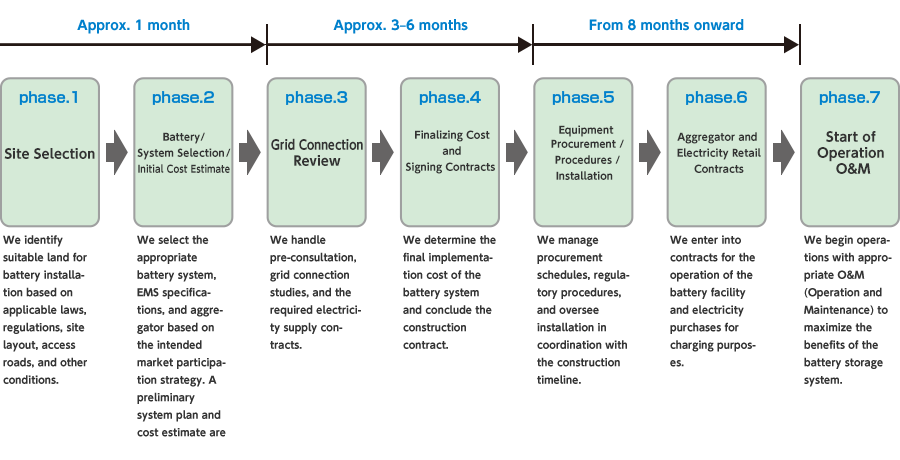
(※1)The timeline may vary depending on the installation configuration, battery system capacity, and product delivery schedule.
●Introduction of Grid-Scale Battery Storage by Intellect
1.We support the entire process—from project planning and scheme design to subsidy utilization—offering a comprehensive proposal from development to operation.
2.We assist with identifying underutilized land for battery projects, facilitate site matching, and provide support in project planning.
3.We help introduce experienced aggregators, a key element for monetization, and support the project up to the start of operations.
4.We design optimal layouts and support all necessary permits, approvals, and grid connection applications.
5.As an independent company, we propose the most suitable battery manufacturers and system configurations, tailored to each project.
6.We apply our proven expertise in developing, constructing, and operating solar-plus-storage systems and geothermal binary plants.
7.We also offer proposals for peak shifting by installing battery systems at demand locations, contributing to BCP strategies and regional disaster resilience.
●Battery Storage Solutions
We provide customized battery storage systems tailored to meet your specific energy needs.
 |
・Combined Solar Power and Battery Storage Systems
By storing surplus electricity generated from solar power—or electricity that would otherwise be curtailed—battery systems enable the use of power when it's most needed. This helps stabilize supply, increase the amount of electricity sold, and reduce energy costs by improving self-consumption at the demand site. |
|
 |
・BCP (Business Continuity Planning) Support
Battery storage systems can serve as emergency power sources during disasters, supporting your business’s continuity and resilience.
|
|
 |
・Peak Cutting and Peak Shifting
By shifting electricity usage from high-demand (peak) hours to lower-demand periods using battery storage, businesses can reduce electricity costs and minimize environmental impact. |
Contact Us
Please feel free to reach out to us by email or phone.

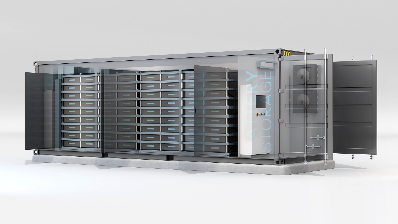



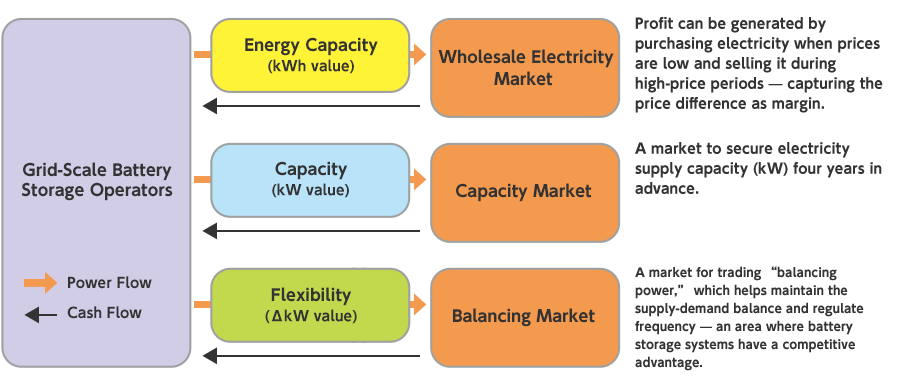
 (Source: Partially edited from the Agency for Natural Resources and Energy, "Considerations on the Connection and Use of Grid-Scale Battery Storage," May 29, 2023)
(Source: Partially edited from the Agency for Natural Resources and Energy, "Considerations on the Connection and Use of Grid-Scale Battery Storage," May 29, 2023) 

